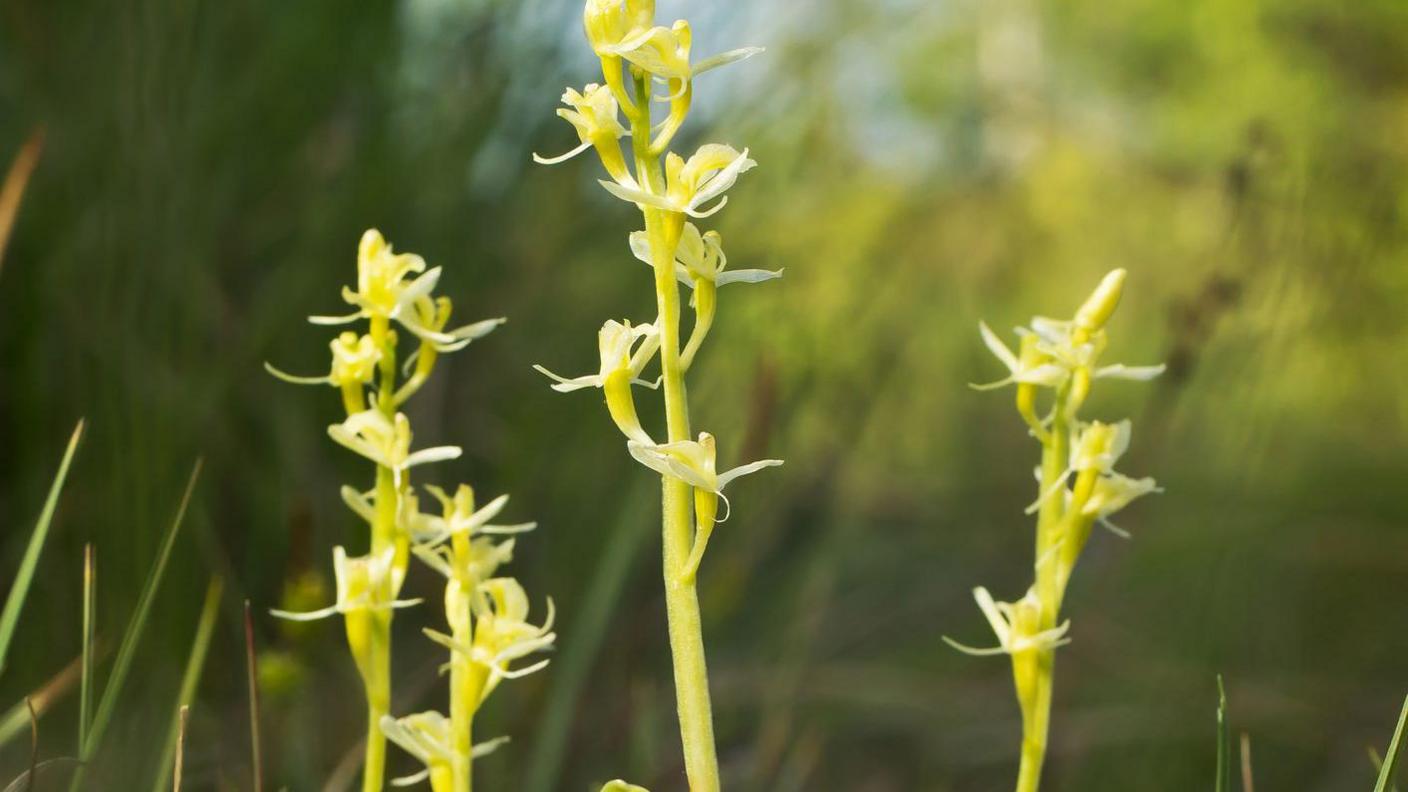Orchid brought back from brink of extinction

- Published
One of Britain's most endangered orchids has been saved from being wiped out, thanks to years years of conservation work, experts have said.
The fen orchid (Liparis loeselii) is no longer listed at risk of extinction on the Great British Red List for vascular plants, a diverse category which ranges from some trees to ferns.
The latest list, produced by the Botanical Society of Britain and Ireland (BSBI) and the UK Centre for Ecology and Hydrology (UKCEH) looks at 1,720 species, more than a third of which were found to be threatened.
Super rare ghost orchid rediscovered in UK
- Published28 August 2024
All flowers are vascular plants, a diverse category which includes ferns, grasses and trees.
A vascular plant is basically anything that conducts minerals and water through the plant itself.
Moss, fungus and algae are the few non-vascular plants.
The fen orchid is thought to be one of the few plants thought to have made it off the GB Red List of vascular plants because of conservation action since the system began in 1977.
It is now listed a near threatened.

The fen orchid is found in wetlands
Why did the fen orchid become so rare?
The orchid, which needs damp alkaline soils and bare ground, flowers for a short period in fens and sand dunes.
Drainage of fens and collecting by plant enthusiasts were two of the reasons it became threatened.
By 2010, it was reported to grow wild in just three locations in East Anglia and one dunes site in Kenfig, Wales.
There were believed to be no more than 1,000 plants in total left.
After work to reintroduce the plant took place it can now be found in seven locations in England and three in Wales with a population of more than 10,000 plants.

Marsh-marigolds are listed as vulnerable to extinction
The fen orchid is a success story in an otherwise stark list.
Of the 1,720 species evaluated for the new List, 434 species (i.e. 26%) were assessed as threatened (Critically Endangered, Endangered or Vulnerable) and a further 140 as Near Threatened.
Conservation experts are warning that many plants which were once widespread in the British countryside are now threatened, including wildflowers such as common milkwort and marsh-marigolds.
Arctic-alpine plants such as the endangered alpine gentian are also threatened.

Arctic-alpine plants such as the endangered alpine gentian are also threatened
Dr Pete Stroh, BSBI scientific officer and lead author of the new list, said:
"This latest revision of the GB Red List again paints a stark picture of the state of our wild flora"
"Many plants once widespread in our countryside have continued to decline to the point where they are now assessed as threatened," he added.
The success of the fen orchid however is being celebrated by experts.
Tim Pankhurst, a former conservation manager at Plantlife, who worked on protecting them said:
"As we face the enormous challenges of climate and biodiversity loss, this provides a moment of genuine hope for the future."
